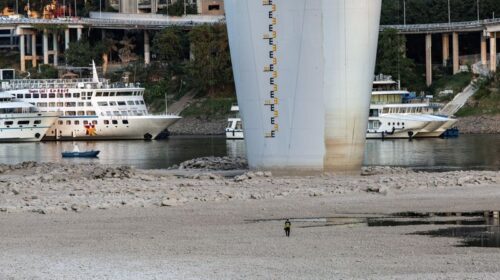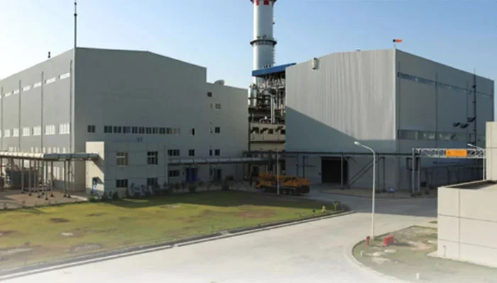That makes the problems being experienced in the backyard of the Three Gorges a warning to other economies in Asia that would seek to follow China’s path to development. Daily hydro generation has fallen 51% amid the worst drought on the Yangtze since the early 1960s, part of a worldwide drying that’s also closed the Rhine to barge traffic. That’s led to factory shutdowns as soaring demand from air conditioners collides with the constraints of a provincial grid that depends on dams for.
The hydro potential of the Yangtze and its sister rivers originating in the Tibetan Plateau is crucial to the future of Asia. Nearly half of humanity lives in countries dependent on the vast rivers fed by the glaciers and snowpack of the plateau and Himalayan mountains. It’s hotly debated how that frozen store of water will fare as the climate warms — but this year’s events in Sichuan, in southwestern China, show that even a change in rainfall conditions downstream can affect output from major dams.
That’s important, because these rivers provide a large slice of the clean energy set to be installed over the coming decade. While China’s current crop of dams are likely to be the last it builds for many years, India has about 29 gigawatts on the way, with another 13 gigawatts in neighboring Pakistan, Nepal and Bhutan. Nine more gigawatts will come from Vietnam and Laos, heavily dependent on the Tibetan Plateau-fed Mekong, according to the International Energy Agency.
Renewable energy — dependent as it is on the vagaries of planetary forces, rather than the certainties of fossil fuels’ industrialized commodity supply chain — always suffers from variability in output. Dams, however, are often seen as being exempt from the worst effects. With reservoirs acting as a vast battery of stored energy, they have a great deal of freedom to determine their output on any given day. So-called pumped hydro stations can even move water between two different elevations, providing a surge of electricity at the touch of a button.
The drought on the Yangtze is showing how the climate can scramble that logic. Solar’s major variability can be measured in hours, governed by the rise and fall of the sun, and relatively easily fixed by using batteries to shift the midday peak in output to the early evening peak in grid demand.
Wind’s volatility moves in days, characterized by what’s known in Germany as a dunkelflaute — a period of a week or so when the weather is unusually calm and cloudy, depressing output from turbines even as solar panels are underperforming. At present, those conditions require imports from other regions and increased burning of fossil fuels to keep the grid humming, but don’t cause blackouts.
Hydro power, however, has a unique ability to underperform for a whole season. Given its scale in China’s grid — at the peak in 2016, it accounted for about 18% of electricity generation — that’s a problem. So far this year, the gap between the highest and lowest months for wind generation in China has been equivalent to about 38% of output in the average month, while solar and nuclear have both seen more stable figures of about 13%. The equivalent variability gap for hydro has been 58%.
The scale of backup needed to close that shortfall is immense. China has mined about half a billion tons more coal so far this year than it did at the same point in 2019, equivalent to annual consumption in the US — but it’s still not enough.
Those developments of low-carbon energy are welcome — but too often, as in Pakistan, they’re the centerpieces of grid plans that give too little scope to wind and in particular solar, whose affinity for the hot, dry weather that the country has in abundance complements hydroelectricity’s love of rainfall. Pakistan sees hydro rising from 31% to half of its generation mix by 2030, while wind and solar will climb from just 3% to 10%.Opinion. Data. More Data.Get the most important Bloomberg Opinion pieces in one email.EmailSign UpBloomberg may send me offers and promotions.By submitting my information, I agree to the Privacy Policy and Terms of Service.
That could prove a costly mistake. Without a diverse generation mix, grids will have to fall back on the power source that can be imported from overseas: fossil fuels. Future droughts are already expected to squeeze the balance of payments as food import bills rise, a phenomenon seen in Egypt over the past year. Add energy into the mix, and a dry year like the ones that have gripped China since 2020 risks prompting a currency crisis and a visit to the International Monetary Fund.
Hydroelectricity remains a promising way for emerging countries to develop low-carbon electricity at low prices and vast scales. It shouldn’t be seen as a complete solution, however. Without the full suite of renewable technologies, emerging Asia won’t be able to get the energy it needs to develop.





